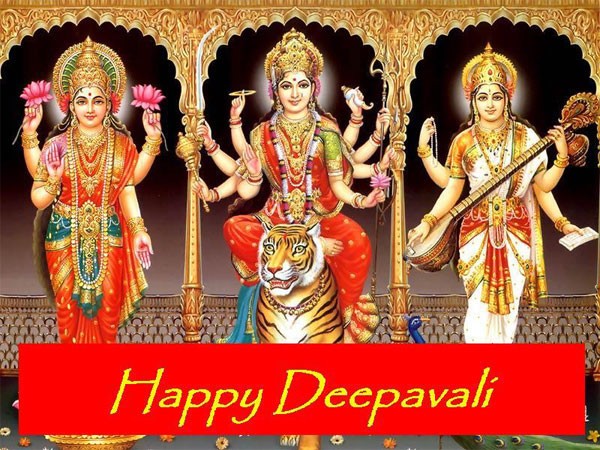Popular Diwali Stories for this Special Festival of Lights
The Killing of the Demon Ravana
Ravana, who had ten arms and ten heads, was the wicked king of the
After a very complete and comprehensive victory over Ravana, Vibhishan was coroneted as King of Lanka. The victorious Ram asked that Sita may be brought back. And Sita was brought back with full protocol as a queen of the victorious army chief.(After a great battle Rama killed the demon and recovered his wife. Rama's return with his wife Sita to Ayodhya and his subsequent coronation as king is celebrated at Diwali.)
When Rama and Sita first returned to Ayodhya it was a dark moonless night and they couldn't see where they were going. Their people put little lamps outside their houses so that the new king and queen could find their way.
But Ram is not called Maryada Purushottam just as a mark of respect. He always respected the existing tradition (Maryada) of that time. He declared that Sita had to pass the Agni Pariksha test so that he could accept her back. Laxman strongly opposed this. Yet the victorious army chief insisted that Agni Pariksha was the only thing which could make him accept her. Sita agreed and after the satisfactory completion of the ritual ‘Agni Pariksha’, Shri Ram gladly accepted her back as his wife.
Yet the victorious army chief insisted that Agni Pariksha was the only thing which could make him accept her. Sita agreed and after the satisfactory completion of the ritual ‘Agni Pariksha’, Shri Ram gladly accepted her back as his wife.
We the mortals know that Shri Ram was an incarnation of Vishnu and Sita that of Goddess Lakshmi. They performed this Leela so that humanity may never have to suffer such dastardly acts in future. It is also absolutely clear that Shri Ram could not have disowned Sita without rejecting Agni Pariksha. After becoming
Chakravarti Samraat, Shri Ram ordained that humanity, present and future, would never ask any female to undergo this test. Perhaps this was the first Dharm of the much cherished RAMRAJYA. What were the other dharm, we would like to know. So,in diwali we pray to god to remove all such evils like demanding dowery,dowery death and their misuse ,tradition , etc
, etc













